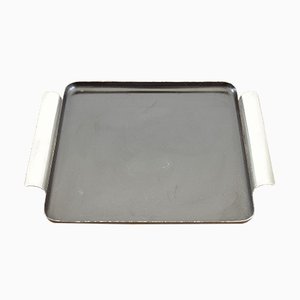
Born in Chemnitz, Germany, in 1893, Marianne Brandt née Liebe created a pioneering body of work that spanned a wide range of disciplines: painting, sculpture, photography, and design. Beginning her education in 1911 at a private art academy in the Weimar Republic, Brandt was later accepted to the Bauhaus School, where she studied painting under Fritz Mackensen and Robert Weise before transferring to the sculpture department under Richard Engelmann. In 1919, Brandt married Norwegian painter Erik Brandt. Continuing her studies at Staatliches Bauhaus in Dessau, Brandt furthered her skills while attending classes taught by Josef Albers, László Moholy-Nagy, Paul Klee, and Wassily Kandinsky.
Between 1924 and1929, Brandt worked in the metal shop under the guidance of Moholy-Nagy, creating numerous designs that are now considered modernist icons, such as her 1924 teapot and sieve. Her stint working at and eventually running the metal shop came with commissions to develop and create products, both artistic and industrial—including a substantial number of designs for lighting firm Körting & Mathiesen, for whom she designed the 1928 Kandam Table Lamp. In 1929, Brandt worked briefly in Walter Gropius's architecture firm, where she oversaw design and fabrication for mass-produced and modular furniture. Later she worked as head of the design division for the applied arts at the Ruppelwerke Metalware Factory in Gotha.
As Brandt began to wind down her professional career, she returned to painting and photography, making a name for her experiments in still-life and self-portraiture. These late works, especially her photomontages, began to surface and find acclaim in the 1970s.
Brandt’s work is collected by the British Museum, Bauhaus Archiv, and the Marianne Brandt Haus, in Chemnitz.


